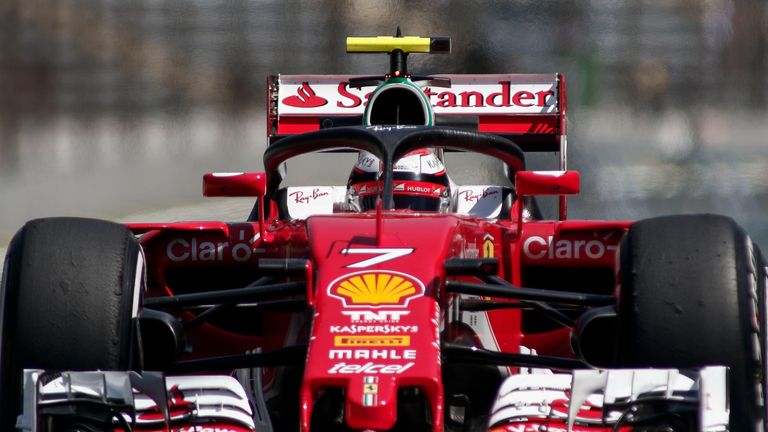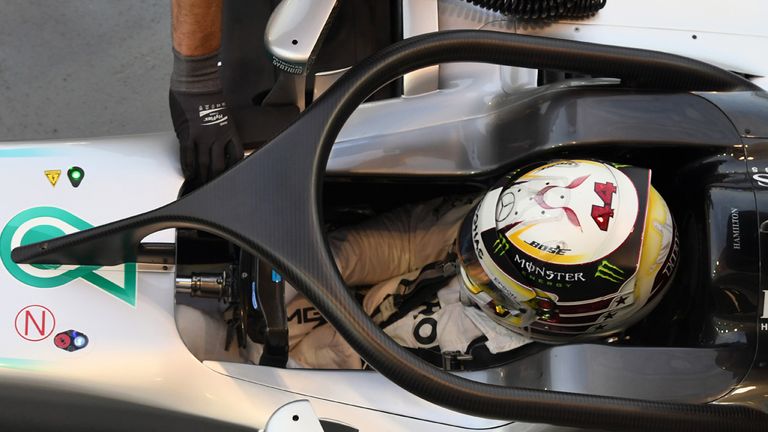F1 in 2018: Halo device confirmed by FIA for next season's cars
Days after Shield test made Vettel "dizzy", FIA announces the controversial Halo to appear on all F1 cars from the 2018 season
Thursday 20 July 2017 10:42, UK
F1 will introduce the controversial Halo cockpit protection device onto cars for the 2018 season, the FIA has announced.
The sport's governing body revealed the surprise move after a meeting of F1's Strategy Group on Wednesday, at which all 10 teams were represented for the first time.
However, Autosport has claimed that the majority of teams voted against the Halo at the meeting, with the FIA pushing it through on safety grounds.
An FIA statement read: "Following the unanimous agreement of the Strategy Group, in July 2016, to introduce additional frontal protection for Formula 1 and the repeated support from the drivers, the FIA confirms the introduction of the Halo for 2018.
"With the support of the teams, certain features of its design will be further enhanced.
"Having developed and evaluated a large number of devices over the past five years, it had become clear that the Halo presents the best overall safety performance."
The FIA statement did not mention the level of support for the Halo in Wednesday's meeting.
The move comes less than a week after the first public trial of an alternative system, the Shield, at Silverstone proved inconclusive after Sebastian Vettel complained that driving behind it made him dizzy.
In the wake of incidents in F1 and junior categories in which drivers sustained head injuries after being struck by flying objects, the FIA committed to introducing some form of enhanced cockpit protection from 2018.
All teams and drivers tested the Halo in practice sessions last year but opinion remained split about whether it should be introduced, largely on aesthetic grounds.
The emergence of The Shield suggested that it had become the FIA's preferred solution.
Teams were thought to be pushing for a decision as soon as possible on what device would be used so they could more easily incorporate it into their in-development 2018 cars. However, the first test of the Shield appears to have put the Halo back in favour for at least next season.
What else was discussed about F1's future?
The F1 Strategy Group, which sits above the F1 Commission and the World Motor Sport Council in the sport's decision-making structure, is formed of five permanent members - Mercedes, Ferrari, Red Bull, Williams and McLaren - and the next best-placed in the previous year's standings, which in 2016 was Force India.
F1's smaller teams have persistently voiced their frustration at being excluded from the discussions, but at Wednesday's meeting "observers" from the other four outfits were present.
In addition to giving the green light to the Halo, the meeting also covered the 2021 engine regulations, cost control and fresh measures to improve F1's spectacle.
On F1's next engine format, teams received an update on recent meetings between current and prospective suppliers which the FIA says included "significant representation from the bulk of global motor sport power unit manufacturers".
Further analysis on the discussions will be held through the summer ahead of the next Strategy Group meeting in September.
The FIA also says "a new approach to cost control" received unanimous support, with a Working Group to be charged with coming up with "innovative solutions" on how to ensure the sport remains sustainable.
Prospective sporting matters to improve the F1 spectacle were also discussed ahead of further studies.
If you are using skysports.com you can comment below to get involved in the debate, but please adhere to our House Rules. If you wish to report any comment, simply click on the down arrow next to the offending comment and click 'Report'.




